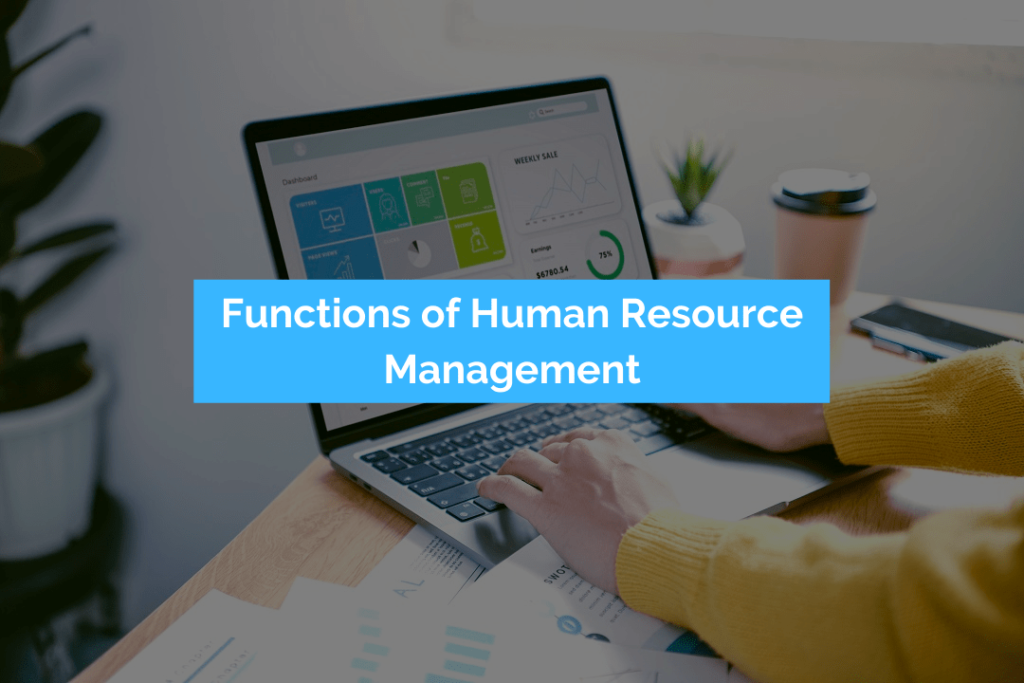HR planning, recruitment, workplace safety, training, development, remuneration, labor law compliance, managerial relations, and employee and labor relations are the main functions of human resource management (HRM).

What is Human Resource Management?
Human Resource Management (HRM) is a planned and comprehensive approach to managing people at work in order to improve productivity.
Human resources management is one of the most important roles of a business, and it is concerned with the process of hiring and managing employees.
Human resources management is a process that relies on successfully and efficiently managing human resources in order to achieve the desired outcomes.
Human resource management (HRM) has been incorporated into the hearts of enterprises across every industry thanks to Learning Management Systems (LMS).
Both managers and staff benefit greatly from the implementation of an LMS in a company. With an LMS, creating training content is easier and less expensive.
10 Key Functions of Human Resource Management
The organization's human resources management has a variety of functions, which can be summarized as follows:
1. Human resource planning:
Human resource planning is concerned with making decisions about the use and development of human resources, as well as assisting in the acquisition of human competencies in the organization's external or internal labor markets.
It's worth noting that it aids in revealing the strengths and weaknesses of the organization's human resources, as well as improving ways of dealing with employees, resulting in cost and time savings to the greatest extent possible, as well as improving decisions by providing a large database of data.
2. Job analysis and design:
Because it begins at the end of the design that serves as its foundation, job analysis is an extension of that design.
Job analysis also aims to define the characteristics of the work, which is a process that aims to collect information about the organization's functions and summarize it after completion of its analysis in the form of written foundations to indicate the organization's functions, powers, and everything else.
Job analysis is a method for achieving the following outcomes:
Work performance standards are established by obtaining and analyzing information about jobs, which results in a job breakdown or job criteria.
Job description in which job-specific goals are outlined, as well as the physical and mental duties that must be completed by the employee.
Job determinants are indicators of the requirements that employees must meet.
3. Recruitment and selection:
The recruitment process tries to attract as many competencies as possible through a strategic approach that includes appealing programmers that motivate human resources and boost their willingness to work for the company.
To be effective, this method must accomplish a number of objectives. These are some of the objectives:
The ability to limit the number of unqualified individuals applying for jobs within the firm, resulting in lower costs due to poor decisions.
Attract personnel who will stay with the company for a long time to achieve high levels of human resource stability.
Attract qualified candidates, which will help you save money on training later.
Employ the proper number of personnel in the firm while keeping costs to a minimum.
Adherence to the methods for locating acceptable competencies and to the legal procedures outlined, resulting in the assurance of legal, social, and ethical responsibility.
The goal of the selection process is to hire personnel from among the shortlisted candidates and place them in a position within the company.
The selection process is based on the attraction process, which is concerned with gathering information about potential employees in order to determine whether they will be accepted or rejected. Personal interviews, physical examinations, oral and written tests, and supplying forms that validate the employee's eligibility for employment, among other approaches, are used in the selection process.
The selection and appointment processes are part of a larger system that includes basic aspects such as inputs, outputs, processes, and feedback.
They also go through a number of stages, beginning with examining and evaluating job applications, conducting initial interviews, and then issuing a final decision on the appointment.
4. Training management:
Training is the process of improving human resource performance and capabilities, and it is carried out according to a set of guidelines in order to identify training needs and build training programmers.
Orientation for new employees and personnel at all levels of the organization is also part of the training.
5. Career development support:
Developing employee career routes and ladders is the process of raising people's levels by assisting them in planning their careers based on aspects such as their personalities and the environment in which they live.
This development also includes raising the facility's standard by arranging the moves of its personnel over the course of their careers and professional lives, resulting in the benefit of having competent staff.
6. Performance management:
A performance appraisal, also known as a human resource performance review, is a tool used by management to assess employees' individual and collective performance, as well as the extent to which they have reached their objectives.
The evaluation criteria are based on the effectiveness and efficiency of the desired achievement.
It's worth noting that this is one of the most crucial functions of human resource management. This is because it reveals the accuracy of the organization's programmers and policies.
It also helps to recruit a large number of new employees with high-quality capabilities for the company, as well as reflecting the company's moral, legal, and social image.
7. General administration services:
The administration is one of the oldest functions of human resource management that companies and institutions rely on, and it was founded on the premise that every facility wants to employ a group of people.
As a result, the facility must undertake a number of tasks and administrative activities in order to follow up with individuals and gather all of their data, as well as guarantee that they are given their rights and encouraged to carry out their responsibilities in their positions.
The library, accounting, and legal services all have different types of human resource administration.
Many of them are processed using computers, which helps to ensure that trustworthy and up-to-date data is available, but the management process remains stagnant.
8. Wage and salary administration:
The human resource department calculates what should be paid for various sorts of work and makes decisions about employee compensation, which includes salary administration, wage administration, fringe benefits, incentives, bonuses, and so on.
The following are some characteristics of HR administration that can be summarized:
Documents, records, and statistics are examples of data and information relating to groups and individuals.
Financial wages are managed and monitored.
Ensure that labor laws are followed.
On a daily basis, keeping track of staff attendance and leave dates.
Choosing the dates for the year's vacations.
Computers are used to process employment records.
Strengthening ties with labor-related government agencies, such as the Ministry of Labor.
9. Labor law compliance:
Minimum wage legislation, contract labor act, factories act, workmen's compensation act, and other labor laws are examples of necessary rules and regulatory compliances that businesses must adhere to.
In the case of labor, compliance refers to the legal framework that an organization must follow when communicating with its employees.
The industries' economic and labor cultures have evolved through time, but the requirements for complying with labor laws remain 50-100 years old.
10. Social development:
It is one of the functions of human resources management that rely on collaboration with the other departments in the institution.
The social, as well as economic dimensions, are intertwined in the implementation of this role.
The modern and strategic functions of human resources management are the focus of social development. It also aspires to shift away from the old approach to human resource management and toward a more modern approach.
Many of the major concerns that affect the facility socially and economically are studied using the modern technique, including continuous learning, social status development, information, communication, and other issues.



